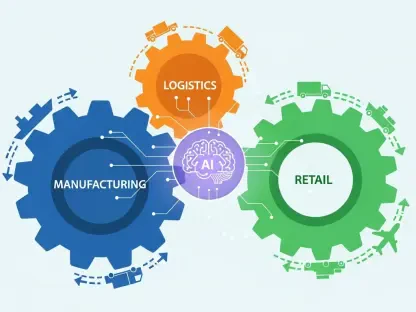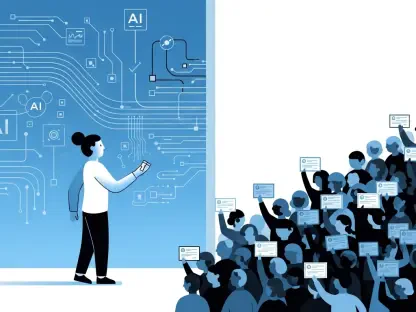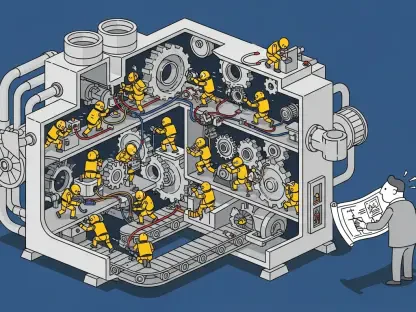Laurent Giraid, a technologist specializing in Artificial Intelligence with a focus on machine learning, natural language processing, and the ethics surrounding AI, joins us today. This discussion will explore the Tony Blair Institute’s (TBI) recent report that discusses the intersection of arts and AI and its implications for the future.
What motivated the Tony Blair Institute (TBI) to release a report on the intersection of arts and AI?
The Tony Blair Institute (TBI) was motivated by the ongoing cultural and technological revolution driven by AI. They recognized a critical opportunity for the UK to take the lead in this evolving landscape and emphasized in their report that countries that embrace and creatively apply AI will set future technical, aesthetic, and regulatory standards for others.
Can you explain the main goal of the report ‘Rebooting Copyright: How the UK Can Be a Global Leader in the Arts and AI’?
The main goal of the report is to outline how the UK can leverage AI to gain a competitive edge in both cultural and technological leadership. It emphasizes setting clear policies that balance innovation with legal clarity, ultimately fostering economic growth and encouraging investment in new creative sectors.
Why does the TBI believe the UK has a unique opportunity to lead in the global race for cultural and technological leadership?
The TBI believes the UK has a unique opportunity due to its strong cultural heritage, cutting-edge research in AI, and a forward-looking regulatory environment. By integrating these elements, the UK can pioneer new standards in combining AI technologies with the arts.
In what ways does the report suggest AI is disrupting traditional media and communication?
The report suggests that AI is revolutionizing how content is created, distributed, and experienced. This disruption is comparable to historical innovations like the printing press and the camera, potentially leading to new forms of interactive and personalized media experiences.
According to the report, what parallels can be drawn between AI and historical technological innovations like the printing press and the internet?
Similar to past innovations, AI is expected to face initial resistance but eventually lead to significant societal adaptation. Just as the printing press and the internet reshaped communication and information dissemination, AI is poised to transform creative expression and media consumption profoundly.
How does the report argue that AI will enhance rather than diminish human creativity?
The report argues that AI will open new avenues for originality and creative expression. It suggests that AI will enable artists to explore new forms and techniques, enhancing rather than replacing human creativity by providing new tools and inspirations.
What are some examples of other industries where the AI revolution is having a significant impact, as mentioned in the report?
The report mentions several industries, including healthcare, where AI aids in analyzing X-ray images, emergency services that use AI to locate earthquake-damaged houses, and scientific research where AI accelerates discoveries. These examples underscore AI’s broad and transformative impact across sectors.
How does the TBI envision the future capabilities of AI systems?
TBI envisions that future AI systems will become increasingly powerful and capable due to advancements in computing power, data availability, model architectures, and expertise. This progress will enable AI to offer more sophisticated and beneficial applications across various domains.
What is the UK government’s stance on becoming a global leader in AI, and what steps have they taken towards this goal?
The UK government has expressed a strong ambition to lead in the AI field, as outlined in its AI Opportunities Action Plan. Prime Minister Keir Starmer’s announcement on January 13, 2025, signaled a commitment to this goal. The plan includes investing in AI development, fostering innovation, and creating a supportive regulatory environment.
How does the TBI respond to the debate on the application of UK copyright law to AI training?
The TBI believes the current debate is often framed incorrectly as a “zero-sum game” between AI developers and rights holders. They argue for a more nuanced approach that recognizes the potential for win-win solutions through legal clarity and modernized policies that reflect the technological advancements.
What is the TBI’s opinion on the framing of the copyright debate as a “zero-sum game” between AI developers and rights holders?
TBI contests this framing, suggesting it misrepresents the issue. They believe focusing on legal clarity and innovative policy solutions can provide mutual benefits for both AI developers and rights holders, encouraging new investments and creative collaborations.
What specific policy solutions does the TBI recommend to address the challenges and opportunities of AI in the arts?
The report recommends several policy solutions, including updating copyright laws to accommodate AI advancements, implementing an effective opt-out system for rights holders, and establishing a remuneration scheme. These policies aim to balance innovation with protecting creators’ rights.
How does the TBI propose UK copyright laws should evolve to remain effective in the age of AI?
TBI suggests that UK copyright laws should “co-evolve” with technological changes to remain relevant. This involves adapting laws to account for the unique challenges and opportunities presented by AI, ensuring that they continue to protect creators while fostering innovation.
What is the text and data mining exception proposed by the UK government, and what are some of the challenges associated with it?
The proposed text and data mining exception allows rights holders to opt-out if they do not want their works used for AI training. Challenges include implementation and enforcement complexities, legal and technical constraints, and the need to balance both rights holders’ and developers’ interests.
What does the TBI’s report say about novel forms of art emerging from AI technology?
The report anticipates that AI technology will give rise to new art forms by enabling unique creations that were previously impossible. This includes interactive and personalized content tailored to individual preferences, showcasing AI’s potential to expand the horizons of artistic expression.
How does the report address the disagreement between rights holders and developers regarding copyright?
The report emphasizes constructive dialogue and policy frameworks that ensure both parties’ interests are protected. It highlights the need for updated copyright laws and legal clarity to foster a collaborative environment where both developers and rights holders can benefit.
What hurdles does the UK’s text and data mining proposal face, according to the TBI report?
The proposal faces significant hurdles, including legal ambiguity, technical challenges in implementing an effective opt-out system, and geopolitical issues. These challenges must be addressed to create a functional and fair framework for all stakeholders.
What are the concerns around the implementation problems with opt-outs in the proposed copyright policy?
Concerns include the potential complexity of managing opt-outs, ensuring they are accessible and useful for rights holders, and tackling issues related to enforcement and compliance. There’s also the risk of some rights holders missing the opt-out process, thus losing control over their content’s usage.
How does the report propose to tackle the challenges of governing an opt-out policy?
The report suggests creating robust mechanisms for managing opt-outs, including clear guidelines for rights holders, effective enforcement measures, and ensuring compliance. Additionally, the report recommends leveraging technology to streamline the opt-out process and making it accessible to all stakeholders.
What does the TBI say about the issue of generative AI and its impact on the creative industry?
The TBI acknowledges the significant impact of generative AI on the creative industry, including concerns about replacing human labor. However, they argue that AI can complement and enhance human creativity, leading to new opportunities and innovations.
Can you explain the recommendation to establish a Centre for AI and the Creative Industries?
The recommendation aims to create a dedicated center that would focus on the intersection of AI and the arts. This center would facilitate research, offer support to creators, and help develop policies that nurture the creative potential of AI while addressing legal and ethical considerations.
What is the reasoning behind the suggestion of a remuneration scheme and targeted levy on ISPs?
The suggestion aims to create a sustainable funding model for supporting the creative industries impacted by AI. A targeted levy on ISPs would generate revenue to fund the proposed Centre for AI and the Creative Industries, ensuring resources are available for ongoing research and development while addressing industry-specific challenges.
Do you have any advice for our readers?
For those interested in the intersection of AI and the arts, my advice is to stay informed about policy developments and actively engage in discussions about legal and ethical implications. Also, embrace AI as a collaborative tool that can empower and amplify human creativity, rather than viewing it as a competitor.









